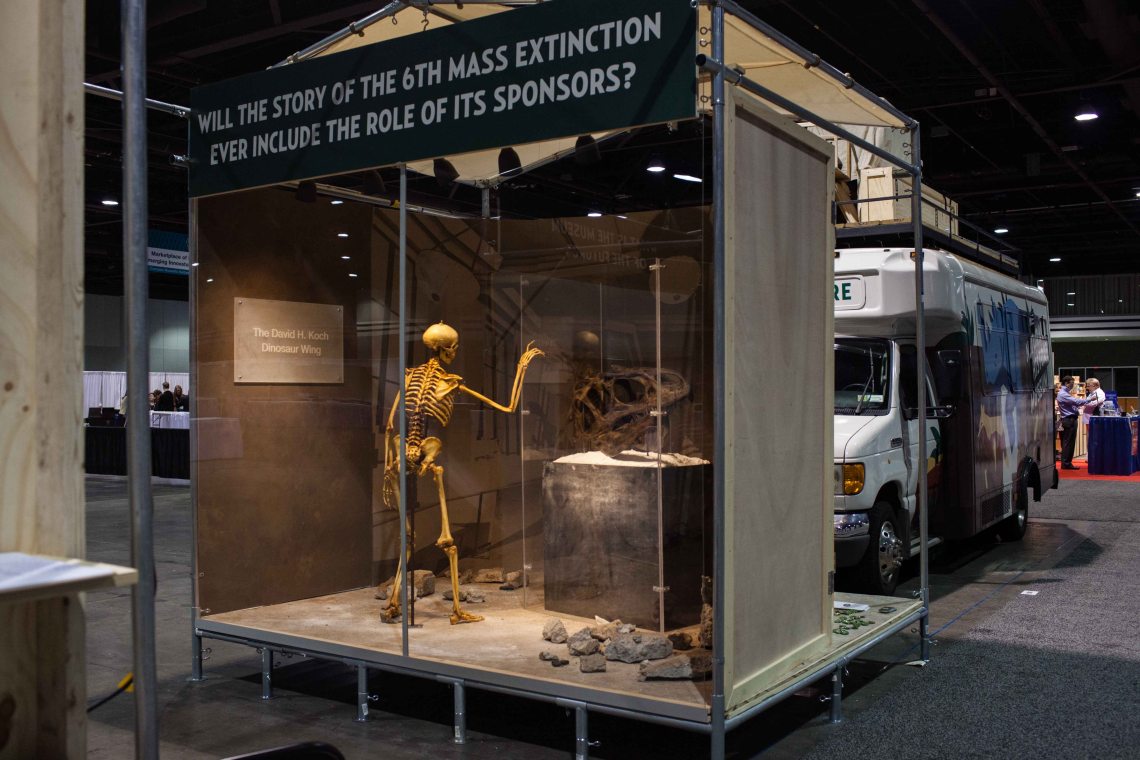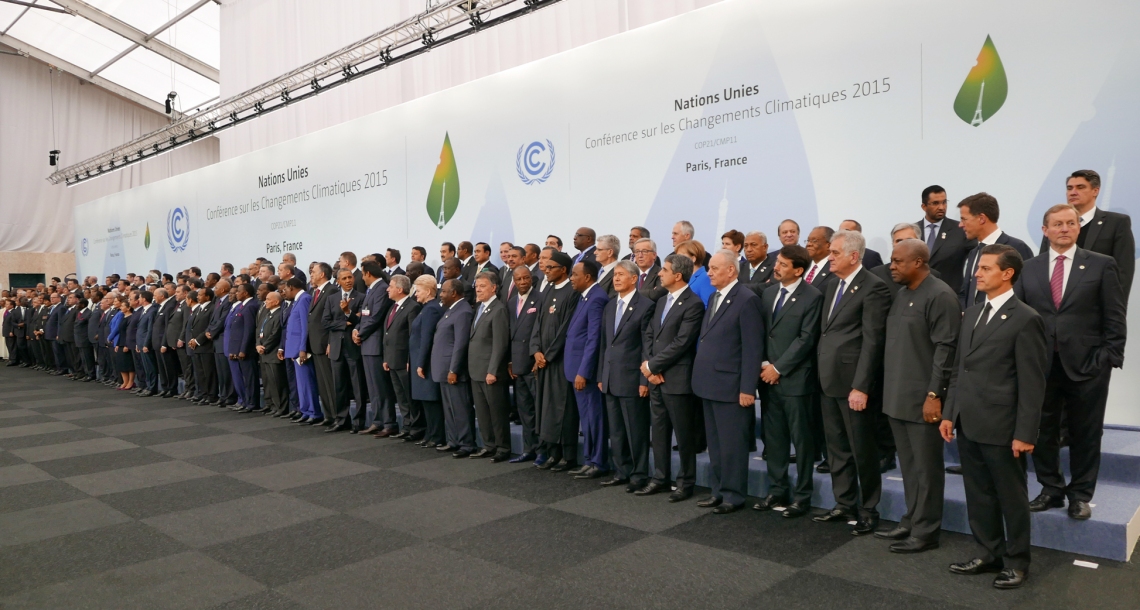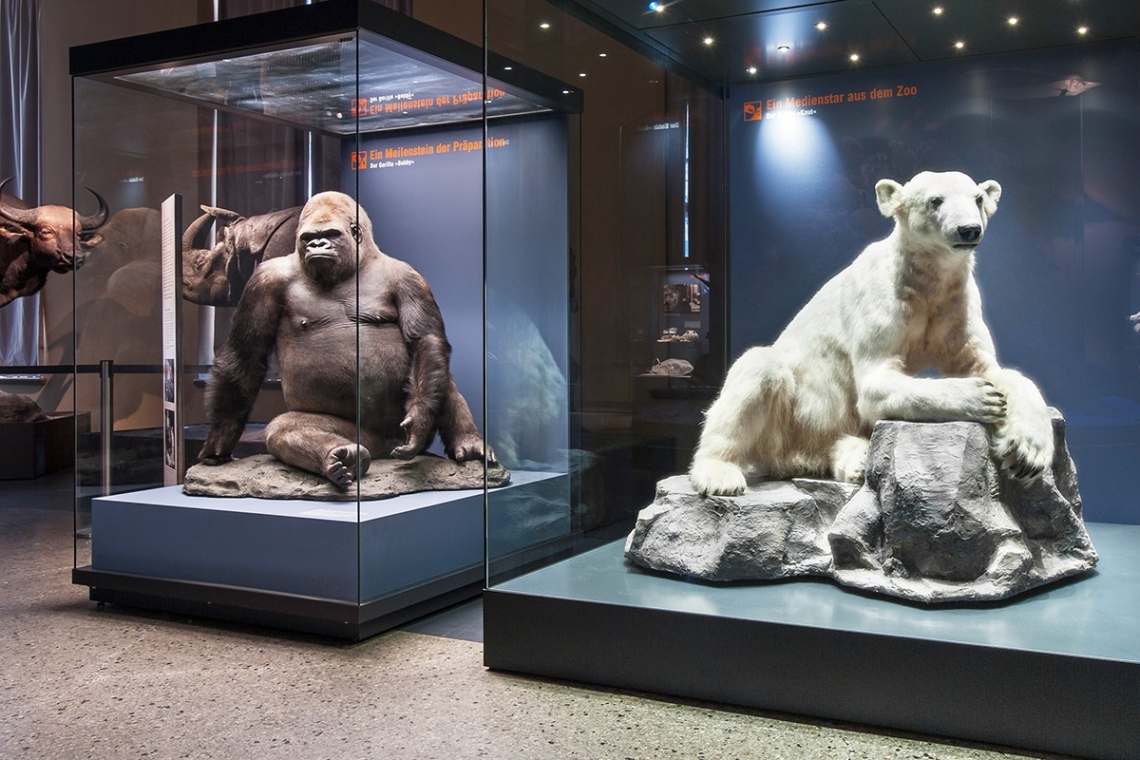Studio Brief for ARCH 401, Iowa State University (Fall 2016)

Objective
Is nature subject to its historicization? What could it mean to consider that ‘nature’ even has a history? How is architecture a crucial player in mediating and narrating changing perceptions of nature throughout history? Most importantly, what is at stake in posing such questions today in an age of climate change?
This studio is an experiment to consider how architecture can intervene in a crucial moment in the changing discourse and increasing instrumentalization of ‘nature’ today. By conceptualizing an institute that explores ‘nature’ as a historically plastic and culturally produced category, and by establishing clear, critical positions toward this, our proposals will optimistically seek to open up new understandings of nature as a political category through which, in turn, to imagine new agendas for action in the struggles that climate change continues to present. For this reason, this studio will also aim to radically deconstruct the ‘museum’ typology. If we are to invent new ways in which knowledge can be challenged and publicly debated, the nineteenth century version of a museum, where knowledge is presented as ‘curated truth’ to be passively consumed, will no longer suffice. Thus, the program of our museum, its accessibility, centrality, organization, use and temporality will all be rethought according to an idealism we will collectively develop toward the question of what nature(s) means today.
Our site will be Piers 92/94 in New York City, a cultural infrastructure (or ‘event space’) that hosts major cultural and commercial shows, exhibitions and fairs. Taking a city in which the massively expanding cultural industry occupies a key source of New York’s allure, gives us the ability to also critically engage with the contemporary status of cultural institutions more broadly and their ability to intervene in, represent and shape public discourses. Furthermore, by proposing a design project within an existing building we will also be positioning architectural design in the present as a necessarily historical exercise: how does design as an intellectual practice change when the demand for newness does not come in the production of a singular building? Where, then, is innovation located and how can it be represented?
Our partner will be the artist collective Not An Alternative, based in Brooklyn. In 2014, this group launched an initiative called the Natural History Museum, which we will take as a kind of template to help us organize our program. While the natural history museum has been conceived as a mobile project, ours will attempt to address similar concerns through architecture in the more traditional sense. We will travel to New York City from Wednesday, 14 September until Sunday, 18 September, where a programmed series of meetings, talks, site visits and tours will be organized.
Problem
It is possible that, for the first time in human history, the crisis that defines our collective experience of the world is the blinding presence of crisis itself. That is to say, we live in a time characterized by the continuous visibility and effects of crisis. From terrorism to global debt wars to volatile global stock markets to the increasing precarity of labor to the implosions of democracy and the slow violence of a changing climate: the social, political and personal horizons of life are almost all inflected by a kind of universal presence of crisis. Crisis shapes discourses, transforms knowledge structures and directs policies and practices ranging from the everyday to the configuration of the state.
This is perhaps most clearly registered for us in the way architectural practices and discourse have been entirely transformed by the crisis imposed by climate change. The metrics of sustainability that developed in the last decades of the 20th century, based initially on fringe practices, gave way to global protocols and benchmarks today, which in turn have given rise to practices of ‘ecological urbanism’ and more recently, ‘resilience urbanism’. In this very short trajectory, we can witness the dramatically increased presence of crisis, where the initial effort to mitigate climate change (via reducing ecological footprints, etc.) has subsided to the seemingly more urgent demand to shore up cities for a changing climate: the solar panels and windmills of the nineties and early 2000’s are now taking a back seat to storm surge walls and flood abatement systems, and the ubiquitous jogger in architectural renderings – a symbol of ecological ‘health’ – has been supplanted by the ubiquity of the kayaker, insidiously exemplifying a ‘healthy’ relation to a world of rising oceans.
Behind such representations, architecture, in the age of climate change, elicits a completely new understanding of nature. That is to say, the more architecture is treated as a technological machine aimed at responding to the climate, the more it also takes on a pedagogical role in turn, illuminating how we are to culturally comprehend nature as climate and how to behave within this space. While this may present interesting and urgent opportunities, in the context of climate change, architecture assists in translating a certain normative, consensual technocratic perception of nature into quasi-public discourse – discourse that is ‘publicly’ known through its private consumption, and thus not debated. If architecture is increasingly a kind of ‘climate machine’ on the one hand and a quasi-public pedagogical medium on the other, its overall effect is to articulate new relations between technology and the environment (LEED), population and urban space (Smart Cities), consumption and domesticity (the Smart Home), and the everyday and emergency (Resilience Urbanism). Architecture, in this sense, is a device that helps to privatize nature-as-climate, preventing it from emerging as a fully public discourse and depoliticizing it as an individuated concern relegated to cybernetic behavioral technologies and feedback loops to modify personal conduct. In short, architecture today has become a primary technological medium that subtly teaches us that what is perhaps the most public of concerns the world has ever faced must be privately seen, passively known and individually addressed.

This is not a problem restricted to architecture alone. Indeed, it is no surprise that the nature today’s architecture gives visibility to resembles closely its depiction by emerging forms of global governance. Indeed, architecture, we could say, serves as a privileged device that both translates the targets of global governance into a techno-scientific architecture of norms, protocols and guidelines and the medium which in turn narrates our new, apolitical, technocratic conception of nature. If climate change is a global problem, its solution, as the dominant narrative has it, must be global campaign in which the totality of individual behavioral modifications will affect planetary benchmarks.
Anamorphic Architecture
A key underlying ambition of this studio will be to explore how we can extricate architecture from the dominant techno-scientific/global governance paradigm of nature-as-ecology. This is not to reject technology, science or forms of global governance, nor is it to dismiss ecology as a framework through which to construct nature. Indeed, within any form of knowledge, there are always inherent and yet-to-be-discovered ways of engaging the political. Rather, if what is at stake is the way we collectively know nature, then we ask how can architecture open a space for counter narratives on what nature(s) can be if imagined as a political category? This studio is a challenge to play within the expanded role that architecture has taken on in the space of climate change. Not a call for more ‘solutions’, this studio will ask its participants to see architecture as a historically rooted cultural site in which to experiment with radical ways in which dominant perceptions of nature can be destabilized, pluralized, undermined or subtly hijacked. Moving away from the predominant perception of ecology as a managerial, technocratic category, we will look to imagine an institute in which ‘nature’ can be given over to collective forms of action.
We will see architecture as a perfect site from which to counter the totalizing and immobilizing depictions of climate in crisis, just as much as we will reject the meager bottom-up moralism in which political action is thwarted by domesticating our response to remain individuated, private. Here, an “anamorphic” approach as theorized by political philosopher Jodi Dean will help us to strategize architecture. As Dean writes:
“‘Anamorphosis’ designates an image or object that seems distorted when we look at it head on, but that appears clearly from another perspective. […] Apprehending what is significant, then, may require…adopting another perspective—a partial or partisan perspective, the perspective of a part. From this partisan perspective, the whole will not appear as a whole. It will appear with a hole. The perspective from which the hole appears is that of the subject, which is to say of the gap opened up by the shift to a partisan perspective.”
Not the receiver of a global protocols translated into vague, normative apparatuses applied universally (‘top-down’), nor the cybernetic machine of behavioral modulation (‘bottom-up’), architecture should instead be idealized as always already ‘anamorphic’ in its ability to frame problems, discourses and ideas ‘from the side’. Architecture is precisely, as Dean calls it, a ‘hole’: a crack or opening within an otherwise totalizing continuum of climate change technocracy, one in which new realities, collectives and possibilities can emerge.
Histories (of the present) of Nature
While we are looking to provide a space in which histories of nature can be made visible, this new institution will challenge the way we understand ‘history’. That is to say, we will understand history to be relevant only insofar as it situates, responds to and operates upon the present. This will be the first and most crucial step in reimagining what a museum is and how it engages with the world it attempts to represent.

Extended Bibliography
Ross Exo Adams. 2014. “Notes from the Resilient City.” Log no. 32.
Ross Exo Adams. 2016. “An Ecology of Bodies.” in Climates: Architecture and the Planetary Imaginary. New York City and Zurich: Columbia Books on Architecture and the City and Lars Müller Publishers.
Peder Anker. 2010. From Bauhaus to Ecohaus: A History of Ecological Design. Baton Rouge: Louisiana State University Press.
Christophe Bonneuil and Jean-Baptiste Fressoz. 2016. The Shock of the Anthropocene: The Earth, History and Us. London: Verso.
Richard Buckminster-Fuller. 1968. Operating Manual for Spaceship Earth. Carbondale: Southern Illinois University Press.
Lorraine Daston and Peter Galison. 2007. Objectivity. New York City: Zone Books.
Jodi Dean. 2014. “Exhibiting The Gaze.” The Natural History Museum. http://thenaturalhistorymuseum.org/wp-content/uploads/2014/09/NAA14_0001_NHM_essaybooklet_version2-1.pdf
Jodi Dean. 2016. “The Anamorphic Politics of Climate Change”. e-flux journal #69. available at: http://www.e-flux.com/journal/the-anamorphic-politics-of-climate-change/
Orit Halpern. 2014. Beautiful Data. Durham: Duke University Press
Jacob Darwin Hamblin. 2013. Arming Mother Nature: The Birth of Catastrophic Environmentalism. Oxford: Oxford University Press.
Martin Heidegger. 1938. “The Age of the World Picture” in Young, Julian and Kenneth Haynes eds. 2002. Off the Beaten Track. Cambridge: Cambridge University Press.
Adrian Lahoud. 2015. “Nomos and Cosmos.” e-flux (supercommunity) http://supercommunity.e-flux.com/authors/adrian-lahoud/
Jason W. Moore. 2015. Capitalism in the Web of Life: Ecology and the Accumulation of Capital. London: Verso.
Michel Serres. 1998. The Natural Contract. Ann Arbor: The University of Michigan Press.
Carl Schmitt. 2007 (1929). “The Age of Neutralisations and Depoliticizations” in The Concept of the Political. Chicago: University of Chicago Press.
Emily Eliza Scott. 2016. “Archives of the Present-Future: On Climate Change and Representational Breakdown” in Climates: Architecture and the Planetary Imaginary. New York City and Zurich: Columbia Books on Architecture and the City and Lars Müller Publishers.
Felicity D. Scott. 2016. Outlaw Territories: Environments of Insecurity / Architectures of Counterinsurgency. New York: Zone Books.
Fred Turner. The Democratic Surround: Multimedia & American Liberalism from World War II to the Psychedelic Sixties. Chicago: University of Chicago Press.
Eduardo Viveiros de Castro. 2012. Cosmological Perspectivism in Amazonia and Elsewhere. Masterclass Series 1. Manchester: HAU Network of Ethnographic Theory
Fantastic! Keep me posted. Jason
Jason W. Moore
Sociology, Binghamton University
Thank you! Good to know it resonates. More soon…